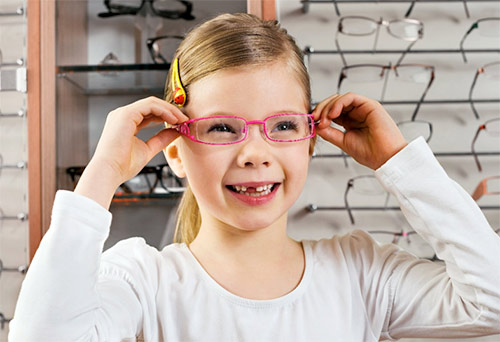
Prevent Blindness has named August Children’s Eye Health and Safety Month. Perfectly timed for thinking about back-to-school, Prevent Blindness has developed a resource for teachers called Star Pupils Eye Health and Safety Curriculum. Certainly teachers are the first to see students struggling, and this curriculum not only raises teachers’ awareness that a major cause of student poor performance may be a vision problem, it also provides lessons for children in grades Kindergarten through 8 to help them understand their eyes and vision.
The Kindergarten through grade 2 curriculum teaches students about the importance of sight, the eye and how we see and how to identify objects and situations that can be dangerous to eyes. In grades 3 to 5, students will learn about eye anatomy and how the visual system functions, refractive errors and how vision can be improved or altered using eyeglasses and other types of lenses, the invention and history of glasses, the challenges people with visual impairment face in a world without sight and how to protect their vision with strategies to keep their eyes healthy and safe. The curriculum for grades 6 to 8 has PowerPoint presentations and lesson activities about the eye and how we see, common vision problems and how to take care of your eyes. Teachers can request a free download of curriculum materials that include presentation guides, lesson plans, resource guides, worksheets, diagrams, activities, posters, PowerPoint presentations and take home materials for students and parents. The curriculum is available at https://www.preventblindness.org/star-pupils-eye-health-and-safety-curriculum.
According to ADDitude, a magazine that offers guidance and support for living with attention deficit and hyperactivity disorder, “Vision disorders sometimes mimic symptoms of attention deficit disorder (ADD or ADHD). In some cases, children are incorrectly diagnosed with ADHD, and started on medication, even though vision problems, like convergence insufficiency, are the root of the trouble. A recent study found that children with vision problems were two times more likely to develop ADHD than their peers, and that school nurses do not attribute poor attention and behavior to vision problems in the classroom.” Similarly, the Optometrists Network notes that “a problem with convergence and/or adequate visual function and/or visual perception…can contribute to learning disabilities or, in some cases, can be mistaken or misdiagnosed as learning disabilities.” This is cause for concern considering that some children may be needlessly medicated, and children diagnosed with other learning disabilities are considered to have special needs, when an eye exam and glasses could correct the problem.
The Optometrists Network lists the following behaviors that may indicate a vision problem that could be mistaken for a learning disability:
- Seems bright, but struggles with reading.
- Fatigues quickly when reading, with frequent signs of frustration.
- Is unable to sit still; cannot stay on task for any length of time.
- Reverses words, numbers or letters.
- Has difficulty remembering spelling words.
- Is disorganized and frustrated when studying visual information.
- Frequently loses his place, skips words or whole lines of text.
- Has poor reading comprehension.
- Has difficulty copying from the board or a book, has sloppy handwriting.
Let’s help the children by getting the word out to parents and teachers. Try attending a school health fair or a PTA meeting, or having a children’s eye health awareness event at your office. Prevent Blindness has many resources available for ECPs on their website. You can also learn more about children’s vision and the corrective options available with our CE, Check Your Eye Development IQ, at 2020mag.com/ce.










